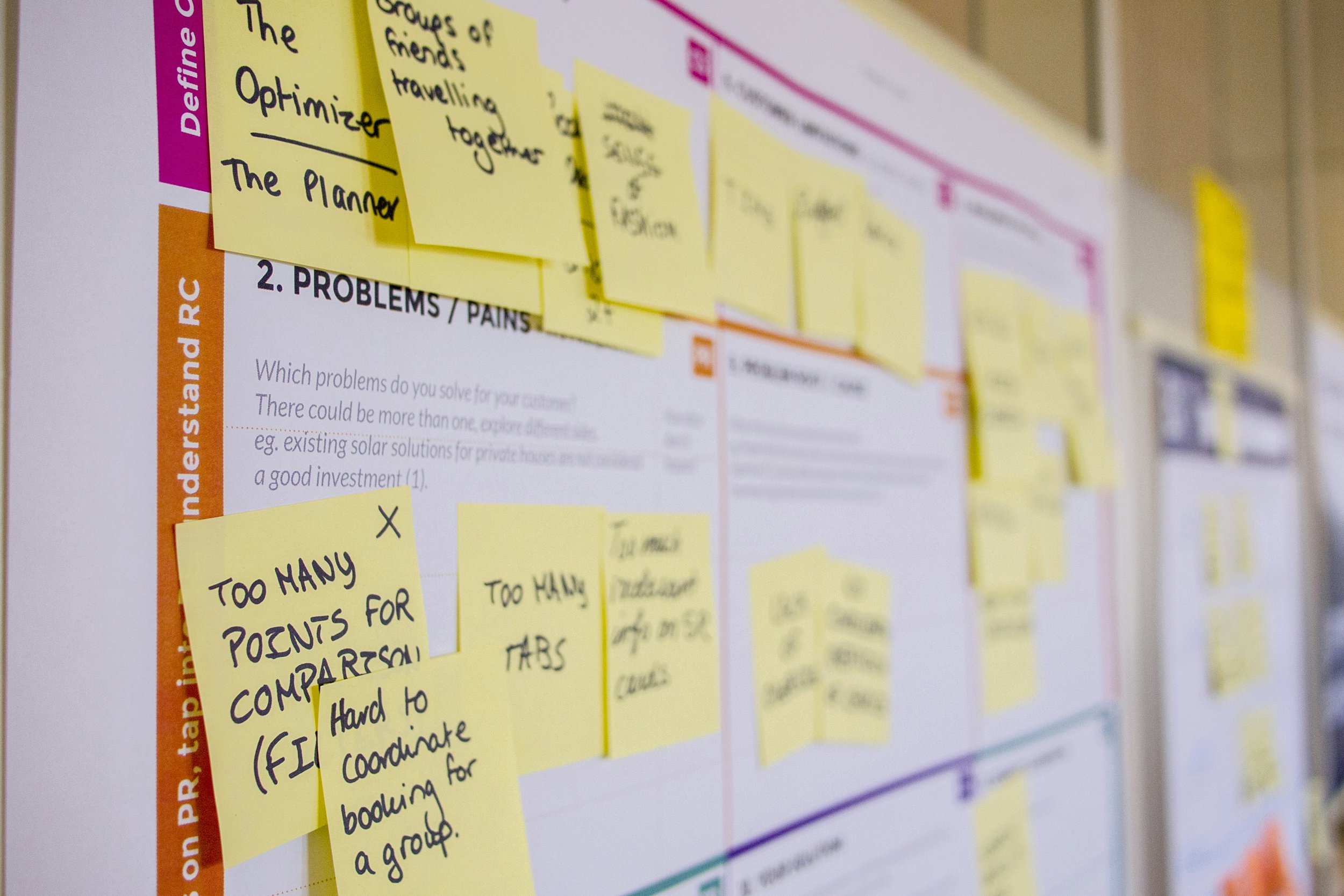
CompanyCam Churn Research Case Study
Retention Intervention @ CompanyCam
Role: Lead UX Researcher | Timeline: 4 weeks
Context & Problem
CompanyCam’s retention team noticed a worrying uptick in customers canceling after just a month of use. As the UX Research lead on the Retention Intervention squad, I was tasked to uncover why customers churn, and, more importantly, what we could build or tweak to keep them around.
Research Goals
Understand the lived experience of churned customers across company sizes (Micro, Small, Medium)
Identify key feature gaps and pricing pain points driving cancellations
Surface actionable recommendations to improve stickiness and unlock growth
Methodology
Recruitment: Emailed everyone who’d churned in the last 30 days, offering a 30-minute interview + $50 gift card
Participants:
10 live interviews (2 Micro, 5 Small, 3 Medium)
13 additional written responses from those who skipped the gift card
Interview Focus Areas: Daily workflows in the field, cost vs. value perception, feature wishlists, competitive tool use
Key Findings
Feature Friction
Offline Mode Gaps
Worked in low-connectivity zones; offline uploads sometimes failed or were hard to locate
Task Scheduling & Reminders
Field teams juggle dozens of jobs; missing in-app reminders meant forgotten site walk-throughs
Document Zoom & Annotation
Couldn’t zoom into plans or link conversations to specific photos, leading to follow-up emails outside CoCam
Integration Needs
Customers use specific tools daily and a lack of native plugs forced manual imports
AI Walkthrough Limitations
Bugs in a hyped area of the product don’t deliver on the promise
Pricing Pain Points
Per-User Model Is Painful for growing teams; seasonal businesses cancel during downtimes
One-Size-Fits-All Tiers force Micros to pay for features they never use
No Pause Option means businesses can’t “suspend” when they have bills to pay
Strategic Recommendations
Fix the Basics First
Prioritize robust offline mode, zoomable plans, and improve AI walkthrough accuracy (geo-tag + measurement)
Introduce a Modular “Core” Tier
Micros get unlimited camera + photo tagging at a low flat fee
Upsell task reminders, AI tools, and integrations as add-ons
Subscription Flexibility
Pause/Resume subscriptions month-to-month to accommodate seasonal cash flow
Tiered Function Bundles
SMBs: All-in-one suite with built-in PLG tutorials
Mid-Market/Enterprise: Pick & pay only for modules they need
Hypothesis:
Micros convert to higher tiers when they see immediate ROI from core features plus one add-on. Meanwhile, mid-market buyers will flock to a “pick-and-choose” model that guarantees they only pay for what they use—boosting average revenue per logged-in user (ARPL) across segments.
Impact & Next Steps
Roadmap Alignment: Shared findings with Product and Engineering; offline mode & pause feature slated Q3
A/B Test Plan: Pilot modular pricing in one region; measure upgrade rate, churn reduction, and ARPL lift
Ongoing Research: Plan follow-up interviews post-launch to validate assumptions and iterate
What I Learned
Segmented Insights Uncover Hidden Needs: Micro businesses often have very different workflows. Treating everyone the same meant we missed critical friction.
Flexibility Drives Loyalty: A “pause” button isn’t just a feature, it’s a signal that we trust and support our users through their busiest (and leanest) months.
Research+PLG Must Coexist: Embedding micro-tutorials in-app can nudge users from free/core tiers into high-value modules.
Tools & Techniques:
• User interviews
• Dovetail for thematic coding
• Figma for journey mapping & wireframe spec
• Collaboration sessions with Product to align on feasibility